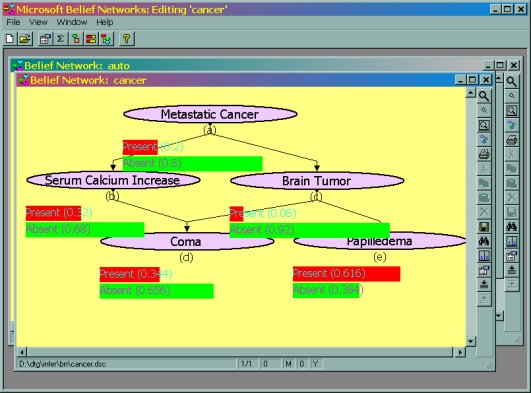As a Microsoft Windows application, MSBNX conforms to "multi-document interface" (MDI) behavior. This means that as new document windows are opened, they appear as nested "child" windows within the primary application window.

There are two types of document windows in MSBNX.
Diagram windows, which display a graphical version of a Bayesian belief network, and
Evaluation windows, which display the results of performing probabilistic inference on one or more graphical models.
You can use the CTRL-TAB key combinations to switch between document windows. Also, the Window menu gives a list of the open document windows and allows you to bring the desired window directly to the top of the window order (that is, make it completely visible).
Document windows can be minimized (converted to an icon at the bottom of the primary window), maximized (resized to occupy the entire primary window) or resized as desired using the sizing handles available at each window edge and corner.
MSBNX also uses a type of window that is a little different from standard windows. These floating windows always appear on top of any of MSBNX's document windows, and can be moved anywhere on the screen. They are used to display information that is contextually associated with the operations being performed on the active diagram window. In other words, their contents change as the active diagram or selected node changes.
As with most applications, MSBNX has several windows known as modal dialogs. This term implies that when such a window appears, it becomes the active window and must be closed in some fashion before you can interact with any other window.